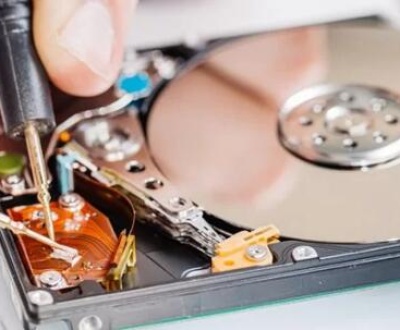Data recovery on Windows can be a detailed process depending on the type of data loss you’re facing.
1. Data Loss
Before diving into recovery methods, it’s important to understand the types of data loss:
Accidental Deletion: Files removed by mistake.
Formatting: Data lost after a drive is formatted.
Corruption: Files or drives corrupted due to software issues or hardware failures.
Physical Damage: Damage to the hardware that makes data retrieval more complex.

2. Preliminary Steps
2.1. Stop Using the Affected Drive
To maximize the chances of recovery, stop using the drive immediately. Continued use can overwrite the deleted files, making recovery more difficult.
2.2. Assess the Situation
Determine if the data loss is due to a simple error, like accidental deletion, or a more complex issue like corruption or hardware failure. This will guide your choice of recovery methods.
3. Built-In Windows Tools
3.1. Recycle Bin
Steps:
Open the Recycle Bin from your desktop or Start menu.
Locate the file you want to recover.
Right-click on the file and select “Restore.”
3.2. File History
If you’ve enabled File History, it can help recover previous versions of files.
Steps:
Go to Settings > Update & Security > Backup.
Click on “More options” under the File History section.
Select “Restore files from a current backup.”
Browse for the file you want to recover and click “Restore.”
3.3. Previous Versions
Windows creates restore points which can help recover files.
Steps:
Right-click on the folder where the file was located.
Select “Properties.”
Go to the “Previous Versions” tab.
Select the version you want to restore and click “Restore.”
4. Using Data Recovery Software
For more complex data loss scenarios, third-party data recovery software can be useful. Here are some popular options:
4.1. Recuva
Steps:
Download and install Recuva.
Open the application and select the file type or location to scan.
Start the scan and wait for the results.
Select the files you want to recover and click “Recover.”
4.2. EaseUS Data Recovery Wizard
Steps:
Download and install EaseUS Data Recovery Wizard.
Launch the program and select the drive to scan.
Choose between Quick Scan and Deep Scan.
Review the scan results and select files to recover.
Click “Recover” to save the files.
4.3. Disk Drill
Steps:
Install Disk Drill on your PC.
Open the software and select the drive you want to scan.
Start the scan and preview the recoverable files.
Select the files to recover and click “Recover.”
5. Advanced Recovery Methods
If software solutions don’t work, you might need to use advanced recovery methods.
5.1. Data Recovery Services
For severe data loss due to physical damage, consider professional data recovery services. These services have specialized tools and expertise to recover data from damaged drives.
5.2. Command Prompt
For tech-savvy users, Command Prompt can be used for some recovery tasks.
Steps:
Open Command Prompt as an administrator.
Use the chkdsk command to check and repair file system errors:
bash
chkdsk X: /f
Replace X: with the drive letter.
6. Preventing Future Data Loss
To avoid future data loss, consider the following measures:
6.1. Regular Backups
Use built-in tools like File History or third-party backup solutions to keep regular backups of your important files.
6.2. Use Reliable Antivirus Software
Protect your system from malware and viruses that can cause data loss.
6.3. Avoid Sudden Power Offs
Ensure that your system is properly shut down to prevent file corruption.
6.4. Keep Software Updated
Regularly update your operating system and software to protect against vulnerabilities.
Data recovery on Windows can be straightforward or complex depending on the nature of the data loss. Using built-in tools is a good first step, while third-party software can help with more challenging scenarios. For physical damage, professional services might be necessary. Implementing good backup practices and maintaining your system can prevent future data loss.
About us and this blog
Panda Assistant is built on the latest data recovery algorithms, ensuring that no file is too damaged, too lost, or too corrupted to be recovered.
Request a free quote
We believe that data recovery shouldn’t be a daunting task. That’s why we’ve designed Panda Assistant to be as easy to use as it is powerful. With a few clicks, you can initiate a scan, preview recoverable files, and restore your data all within a matter of minutes.
Subscribe to our newsletter!
More from our blog
See all postsRecent Posts
- Data recovery salt lake city utah 2025-04-18
- Data recovery sacramento 2025-04-18
- Data recovery miami 2025-04-18

 Try lt Free
Try lt Free Recovery success rate of up to
Recovery success rate of up to









